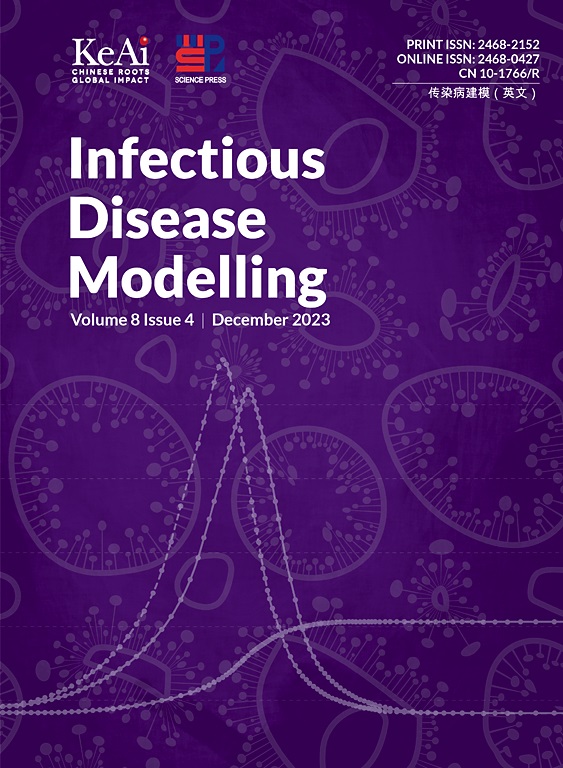The interaction between population age structure and policy interventions on the spread of COVID-19
IF 2.5
3区 医学
Q1 Medicine
引用次数: 0
Abstract
COVID-19 has triggered an unprecedented public health crisis and a global economic shock. As countries and cities have transitioned away from strict pandemic restrictions, the most effective reopening strategies may vary significantly based on their demographic characteristics and social contact patterns. In this study, we employed an extended age-specific compartment model that incorporates population mobility to investigate the interaction between population age structure and various containment interventions in New York, Los Angeles, Daegu, and Nairobi – four cities with distinct age distributions that served as local epicenters of the epidemic from January 2020 to March 2021. Our results demonstrated that individual social distancing or quarantine strategies alone cannot effectively curb the spread of infection over a one-year period. However, a combined strategy, including school closure, 50 % working from home, 50 % reduction in other mobility, 10 % quarantine rate, and city lockdown interventions, can effectively suppress the infection. Furthermore, our findings revealed that social-distancing policies exhibit strong age-specific effects, and age-targeted interventions can yield significant spillover benefits. Specifically, reducing contact rates among the population under 20 can prevent 14 %, 18 %, 56 %, and 99 % of infections across all age groups in New York, Los Angeles, Daegu, and Nairobi, respectively, surpassing the effectiveness of policies exclusively targeting adults over 60 years old. In particular, to protect the elderly, it is essential to reduce contacts between the younger population and people of all age groups, especially those over 60 years old. While an older population structure may escalate fatality risk, it might also decrease infection risk. Moreover, a higher basic reproduction number amplifies the impact of an older population structure on the fatality risk of the elderly. The considerable variations in susceptibility, severity, and mobility across age groups underscore the need for targeted interventions to effectively control the spread of COVID-19 and mitigate risks in future pandemics.
人口年龄结构与政策干预对COVID-19传播的相互作用
COVID-19引发了前所未有的公共卫生危机和全球经济冲击。随着国家和城市逐渐摆脱严格的大流行限制,最有效的重新开放战略可能会因其人口特征和社会接触模式而大不相同。在本研究中,我们采用了一个包含人口流动性的扩展年龄特异性隔室模型,研究了纽约、洛杉矶、大邱和内罗毕(四个年龄分布不同的城市,在2020年1月至2021年3月期间是当地的疫情中心)的人口年龄结构与各种控制干预措施之间的相互作用。我们的研究结果表明,单独的个人社交距离或隔离策略不能在一年内有效地遏制感染的传播。然而,包括关闭学校、50%在家工作、减少50%其他流动性、10%隔离率和城市封锁干预措施在内的综合策略可以有效地抑制感染。此外,我们的研究结果表明,社会距离政策表现出很强的年龄特异性效应,针对年龄的干预措施可以产生显著的溢出效益。具体而言,在纽约、洛杉矶、大邱和内罗毕,降低20岁以下人群的接触率可以分别预防14%、18%、56%和99%的所有年龄组感染,超过专门针对60岁以上成年人的政策的有效性。特别是,为了保护老年人,必须减少年轻人口与所有年龄组的人,特别是60岁以上的人之间的接触。虽然老年人口结构可能增加死亡风险,但也可能降低感染风险。此外,较高的基本再生产数放大了老年人口结构对老年人死亡风险的影响。不同年龄组在易感性、严重程度和流动性方面存在巨大差异,因此需要采取有针对性的干预措施,有效控制COVID-19的传播,降低未来大流行的风险。
本文章由计算机程序翻译,如有差异,请以英文原文为准。
求助全文
约1分钟内获得全文
求助全文
来源期刊

Infectious Disease Modelling
Mathematics-Applied Mathematics
CiteScore
17.00
自引率
3.40%
发文量
73
审稿时长
17 weeks
期刊介绍:
Infectious Disease Modelling is an open access journal that undergoes peer-review. Its main objective is to facilitate research that combines mathematical modelling, retrieval and analysis of infection disease data, and public health decision support. The journal actively encourages original research that improves this interface, as well as review articles that highlight innovative methodologies relevant to data collection, informatics, and policy making in the field of public health.
 求助内容:
求助内容: 应助结果提醒方式:
应助结果提醒方式:


